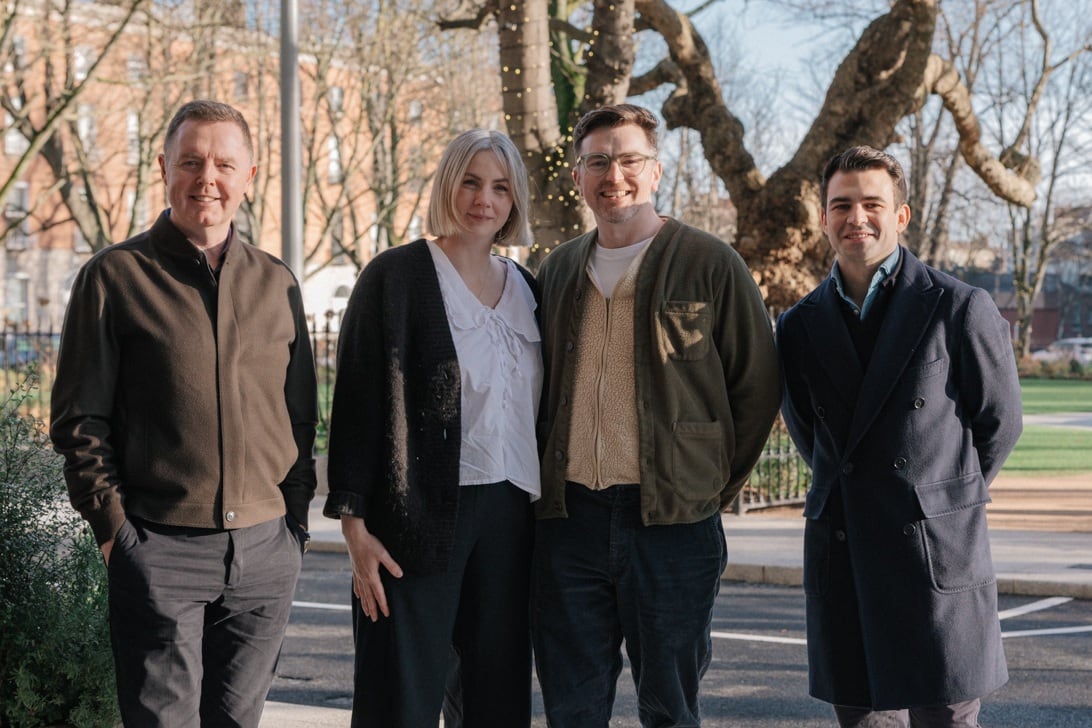Virtually everyone at the Dead Dinner on January 6th felt a personal link with James Joyce, starting with our host, Ambassador Niall Burgess. He and his wife Marie first held their annual commemoration of Joyce’s masterpiece about the feast of the epiphany as newlyweds, when Burgess was a young diplomat in Chicago in 1987.
Twenty guests flanked the mahogany table in the Irish embassy’s dining room. The menu resembled the repast prepared by Gabriel Conroy’s maiden aunts on Usher’s Island: celery with boudin blanc, roast turkey, pear pudding with ginger and vanilla ice cream.
Burgess’s great-grandmother, a stationer on Stephen’s Green, became Joyce’s first publisher by printing The Day of the Rabblement, an essay on theatre which Joyce wrote when he was a 19-year-old student at University College Dublin. “I’d like to say that we discovered him, but it was just a transaction,” Burgess laughed.
The director of the Centre Culturel Irlandais spoke next. “I was named after (Joyce’s wife) Nora Barnacle, said Nora Hickey M’Sichili, who piloted Paris celebrations of the centenary of Ulysses last year.
READ MORE
The Irish molecular biologist Marion Byrne lives in St Gérand-le-Puy, population 1,200, near Vichy. The Joyces lived in the small town in central France for one year from December 1939, because their grandson Stephen was at school there. The active Amis de James Joyce, of which Byrne is president, have put up two plaques and will inaugurate a statue of Joyce next June. The hotel where James and Nora lived is virtually unchanged.
“Joyce was a father who was desperately anxious about his daughter, whose friend Paul Léon was about to be murdered by the Nazis,” Burgess said of that period. “He was disappointed by the critical failure of Finnegans Wake and spent the last year of his life in St Gérand-le-Puy with Paul Léon, correcting the book which no one wanted to read.”
The Paris-based economist Rory Clarke grew up in Holly Park, Dublin, which is in Foxrock Parish, where Samuel Beckett lived, and in Blackrock postal code, where Joyce lived. “I couldn’t escape Joyce or Beckett,” Clarke said.
Joyce spent two decades in Paris, writing Finnegans Wake. After French critics hailed Ulysses as a work of genius, the Irish writer was treated like a celebrity at his favourite restaurant, Fouquet’s, two metro stops from the embassy. Clarke wondered why Joyce “did not immerse himself in Frenchness the way Beckett did”.
Dearbhail McDonald, the chair of the strategy committee at the Centre Culturel, said she is “trying to channel Joyce” while writing her own novel in Paris.
Michel Scott, a foreign correspondent for French television, is the grandson of the great 20th-century Irish architect Michael Scott, who built Geragh House in Sandycove, next to the Martello Tower. “The opening pages of Ulysses take place in my childhood playground,” Scott said.
His grandfather Michael said he designed Geragh “as a series of descending circles, each one wider than the other” in tribute to the Martello Tower and to James Joyce. The director John Huston, who made a magnificent film of The Dead, helped finance the tower’s transformation into a museum.
The actor Cécile Morel has performed Molly Bloom’s soliloquy from Ulysses for the past ten years, including at the Avignon Festival last summer. Morel has even played Molly in Nora Barnacle’s bed in St Gérand-le-Puy, and is writing a book entitled I Said Yes, about her relationship with Joyce and the character.
Clíona Ní Riordáin teaches Irish studies at the Sorbonne and helped Hickey M’Sichili organise the Ulysses centenary. “I am from Cork. Ulysses is supposed to be read in a Cork accent, because James Joyce’s father was from Cork, and recordings of Joyce show he had a slight Cork accent,” Ní Riordáin said.
The French author and radio journalist Laura El-Makki has been commissioned by the embassy to prepare a series of podcasts about Joyce for Bloomsday. El-Makki sees Joyce as the Irish equivalent of Marcel Proust, and compared the dinner in The Dead to Madame Verdurin’s soirées in Proust’s Search for Lost Time.
Among the excerpts from The Dead read aloud was Gabriel Conroy’s speech to his aunts’ guests. His mention of “the tradition of genuine warm-hearted courteous Irish hospitality” met with cries of “Hear! Hear!”
Gabriel’s burst of tenderness and passion for his wife Gretta while she secretly longs for the lost love who used to sing The Lass of Aughrim is the autobiographical focus of the story. Nora Barnacle had been courted by a young man called Michael Bodkin, who left his sickbed to sing to her in the rain, then died of tuberculosis.
Nora Hickey M’Sichili’s rendition of The Lass of Aughrim was a powerful evocation of Joyce’s rivalry with the memory of a dead man. Like Gretta Conroy, we were transfixed and almost moved to tears.












